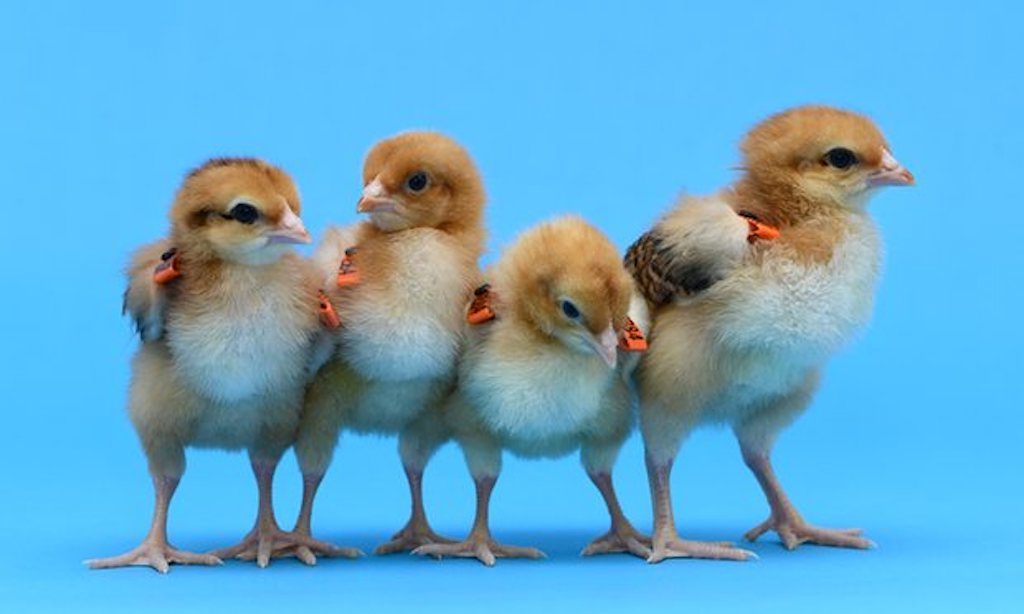
The Rumpless Game is squawky and, as its name suggests, lacks a tail, while the Burmese Bantam, has fantastically flared leg feathers and a head like a feather duster. But the true value of rare chicken breeds, according to a team of scientists working to save them from obsolescence, is not their decorative crests and plumage, but the diversity they bring to the chicken gene pool.
In a radical plan to preserve rare varieties such as the Nankin, Scots Dumpy and Sicilian Buttercup, scientists at the the University of Edinburgh's Roslin Institute have bred genetically modified chickens designed to act as surrogates that would be capable of laying eggs from any rare breed.
Speaking to journalists at the AAAS conference in Boston, Mike McGrew, who is leading the project, said: "These chickens are a first step in saving and protecting rare poultry breeds from loss."
The surrogacy technique, which places a new, mind-bending twist on the classic chicken or egg question, involves first genetically engineering hens to be sterile. This is done by deleting a gene, called DDX4, that is required for the development of primordial follicles (the precursors to eggs) meaning that the surrogate hens will never lay eggs that are biologically their own.

The next step will be to transplant follicles from rare birds into the surrogate (this is done before the surrogate chick is hatched from its own egg), meaning it would go on to lay eggs belonging to entirely different breeds of chicken.
Given that the hens would also need to be artificially inseminated with sperm from the same rare variety, the approach may appear unnecessarily convoluted. Why not just breed the rare birds the normal way?
The scientists' ultimate goal is to create a gene bank of chicken breeds preserved for posterity, and since primordial follicles can be frozen efficiently, while eggs cannot, the surrogacy technique serves an essential work-around.
The Roslin team has set up the Frozen Aviary, a £14m project aimed at preserving a wide variety of poultry breeds.
"We're interested in chicken because that is the animal which is the most consumed animal on the planet and we want to protect all the different breeds of chickens that we have," said McGrew. "So we can freeze down all the breeds of chicken."
McGrew predicts that the surrogates will be able to lay eggs from any breed, including chicken's wild predecessor, the red junglefowl, but he is doubtful about whether it will work efficiently across species - it is not likely that the surrogate hens will be giving birth to eagle chicks, for instance.
Richard Broad, a field officer for the Rare Breeds Survival Trust, said the idea was appealing: "You can save all kinds of breeds, put them in a freezer and there would be a genetic ark for us."

Broad agreed that rare chickens could be a source of valuable genetic variation, potentially carrying variants that would provide resistance against new forms of avian flu. "It's not what we're protecting in the breeds that's important, it's what those breeds represent in their genes," he said.
The Frozen Aviary, which would allow scientists to rapidly expand populations that contained a protective gene for a new disease, bring breeds back to life after they had been declared extinct and provide an insurance against commercial breeds, which have been honed for their fast-growing, being wiped out by a disease.
The avian biobank currently has genetic material from 25 different breeds and more than 500 samples from individual birds, all stored in liquid nitrogen cryostats. "They should be good - as long as the power doesn't go out - for decades," said McGrew.
At present, the team is focused on chicken breeds, but expects the technique to work to preserve rare varieties of ducks, geese and quail. Previously, scientists in Dubai used a similar technique in male birds to create a houbara (a large bustard) fathered by a cockerel.
In the future, it may also be possible to use the technique to conserve endangered species such as golden eagles - although this would depend on a suitable surrogate being identified.
"The question remains open on how evolutionarily related they have to be for them to transplant them," said McGrew. "You need a bird that can be bred in captivity and produce a lot of eggs."



Reader Comments
to our Newsletter